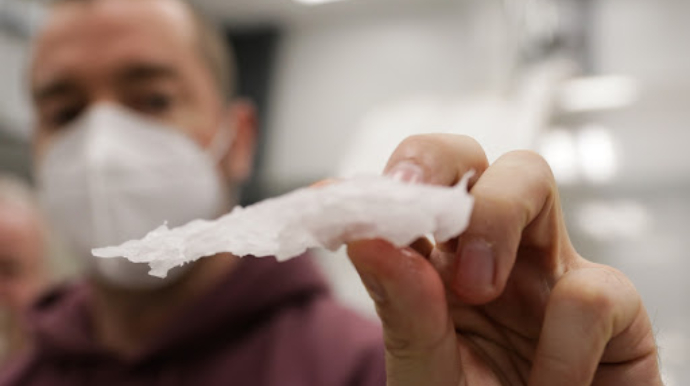FAST Aerospace Safety & Training Conducts Research for NASA Using the Midland Altitude Chambers - You Won’t Believe What Happens

24 Mar 2021
News
Midland, Texas is aiming at the forefront of space innovation as more technologies are tested at the Midland Altitude Chamber Complex (MACC). Located at Midland’s Spaceport, these hypobaric chambers have the advanced technology necessary to test materials and products that are designed to withstand the pressures of outer space.
Humans and animals are 70% water and through this experiment, we can glimpse what would happen to them in outer space. As the altitude increases, water begins to boil. That is, until it reaches an altitude of around 115,000 feet and the boiling water begins to freeze. The FAST demonstration shows how incredible this process is: at one point the water is both boiling and freezing, which is fascinating for science, but challenging for NASA and the astronauts going into outer space. To protect humans in space, new technologies are being developed and tested. This testing can be done in the Midland Altitude Chamber Complex, as the FAST experiment was.
Outer Space Technology and Research is Accelerating
The purpose of the FAST experiments is to evaluate the pathophysiology, prevention and treatment of ebullism using a small animal model exposed to the pressure equivalent of the vacuum of space by exposing them to low pressures in the altitude chambers. This interest stems from the increase in flights that are anticipated in upcoming years, along with the need to protect astronauts from the dangers of space.
The National Aeronautics and Space Administration (NASA) and commercial partners are increasing the number of human spaceflights in upcoming years.
NASA plans to return astronauts to the Moon by 2024 and commercial partners plan to host several spaceflight participants on paid ventures to Earth’s orbit. As spaceflights begin to increase in number, astronauts and spaceflight participants are at increased risk for exposure to the hazardous environment of space.
 Compared to the surface of Earth, space is an unviable environment, with increased radiation exposure, extreme temperatures and a lack of pressure. Maintaining a pressurized environment for crewmembers is of utmost importance.
Compared to the surface of Earth, space is an unviable environment, with increased radiation exposure, extreme temperatures and a lack of pressure. Maintaining a pressurized environment for crewmembers is of utmost importance.
If the pressurized environment (i.e. spacecraft or spacesuit) is punctured by orbital debris for example, decompression will occur, where air leaks out into the vacuum of space. NASA’s Human Research Program rates decompression issues as a risk that requires mitigation. Depending on the type of decompression (i.e. slow vs rapid), crewmembers are subject to decompression illness (where gases bubble out of the blood and tissues like opening a shaken-up bottle of soda) and ebullism syndrome, the most severe decompression disorder.
Ebullism syndrome occurs with rapid decompression above 63,000 feet (where the ambient pressure is 47mmHg or less). At this altitude and pressure, water boils at 98.6degF (body temperature) instead of 212degF like at sea level. Because of this, if there is no pressurized space suit to protect a crew member, the water in their body (blood, tissue fluids, etc.) will boil from body heat alone. This water boiling and the vapor produced will cause damage to body tissues, including the cardiovascular, respiratory and nervous system tissues, among others.
This ultimately leads to loss of consciousness, the loss of the ability to breath, and death. No established treatment protocol exists for ebullism. Most research on ebullism was studied from the 1940s-1970s, with findings limited by inconsistent animal models and outdated technologies.
Understanding the pathophysiology of ebullism is imperative to addressing prevention and treatment of ebullism syndrome and thus, will ultimately lead to the protection of NASA crewmembers inadvertently exposed to the vacuum of space and expand on the limited knowledge of how to prevent and treat ebullism syndrome.
Companies Can Leverage the MACC Technology
Midland’s International Air & Space Port offers access to advanced technology, such as the Midland Altitude Chamber Complex, along with the ability to launch satellites and test equipment. Affordable sites and access to a skilled workforce make Midland an ideal location for any growing company. Click here to learn and request information.
Read about the expirements conducted for NASA here.
More Topics


Best & Worst States to Drive in
Mar 22 2021

